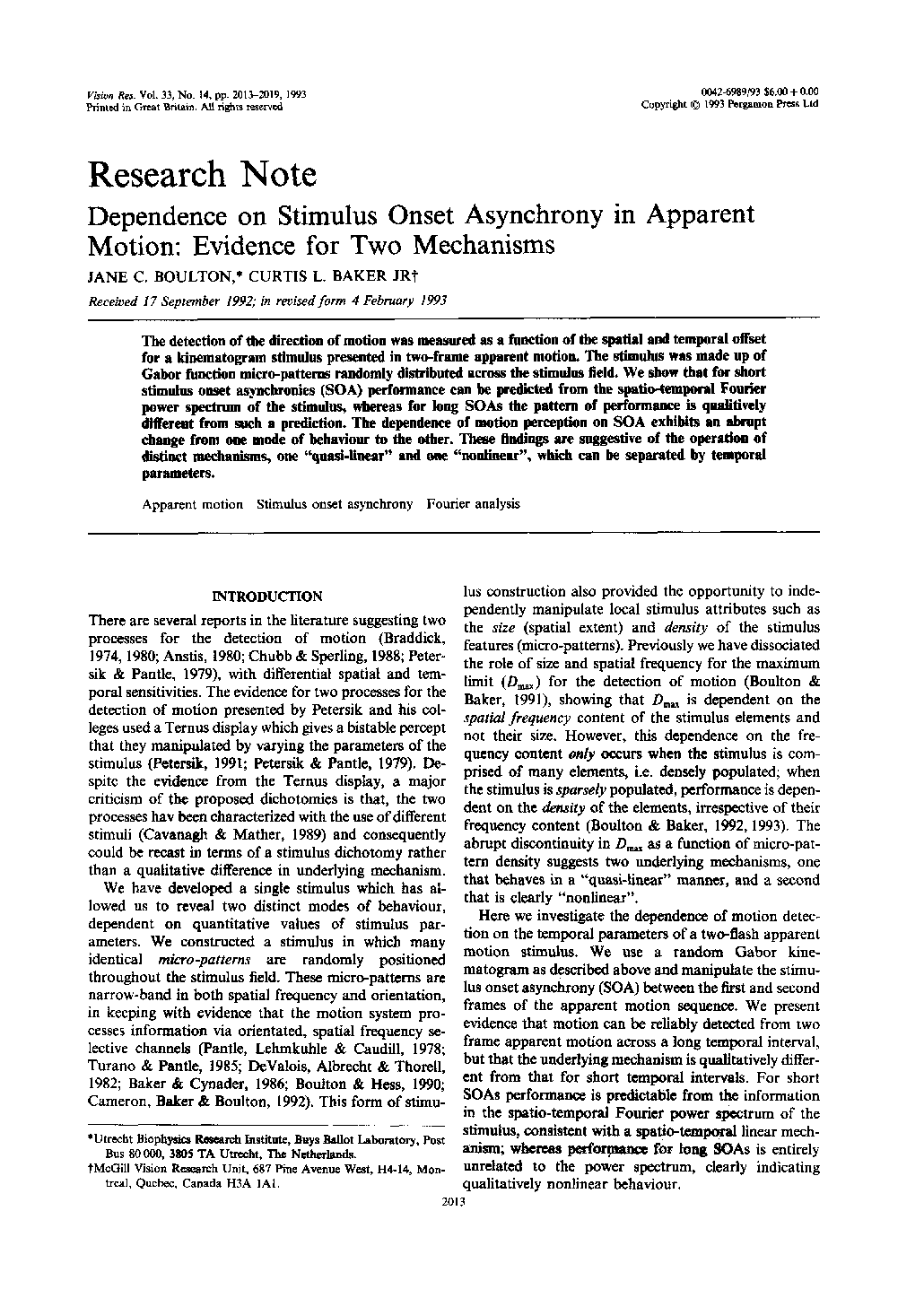| Article ID | Journal | Published Year | Pages | File Type |
|---|---|---|---|---|
| 4038713 | Vision Research | 2013 | 7 Pages |
The detection of the direction of motion was measured as a function of the spatial and temporal offset for a kinematogram stimulus presented in two-frame apparent motion. The stimulus was made up of Gabor function micro-patterns randomly distributed across the stimulus field. We show that for short stimulus onset asynchronies (SOA) performance can be predicted from the spatio-temporal Fourier power spectrum of the stimulus, whereas for long SOAs the pattern of performance is qualitively different from such a prediction. The dependence of motion perception on SOA exhibits an abrupt change from one mode of behaviour to the other. These findings are suggestive of the operation of distinct mechanisms, one “quasi-linear” and one “nonlinear”, which can be separated by temporal parameters.
